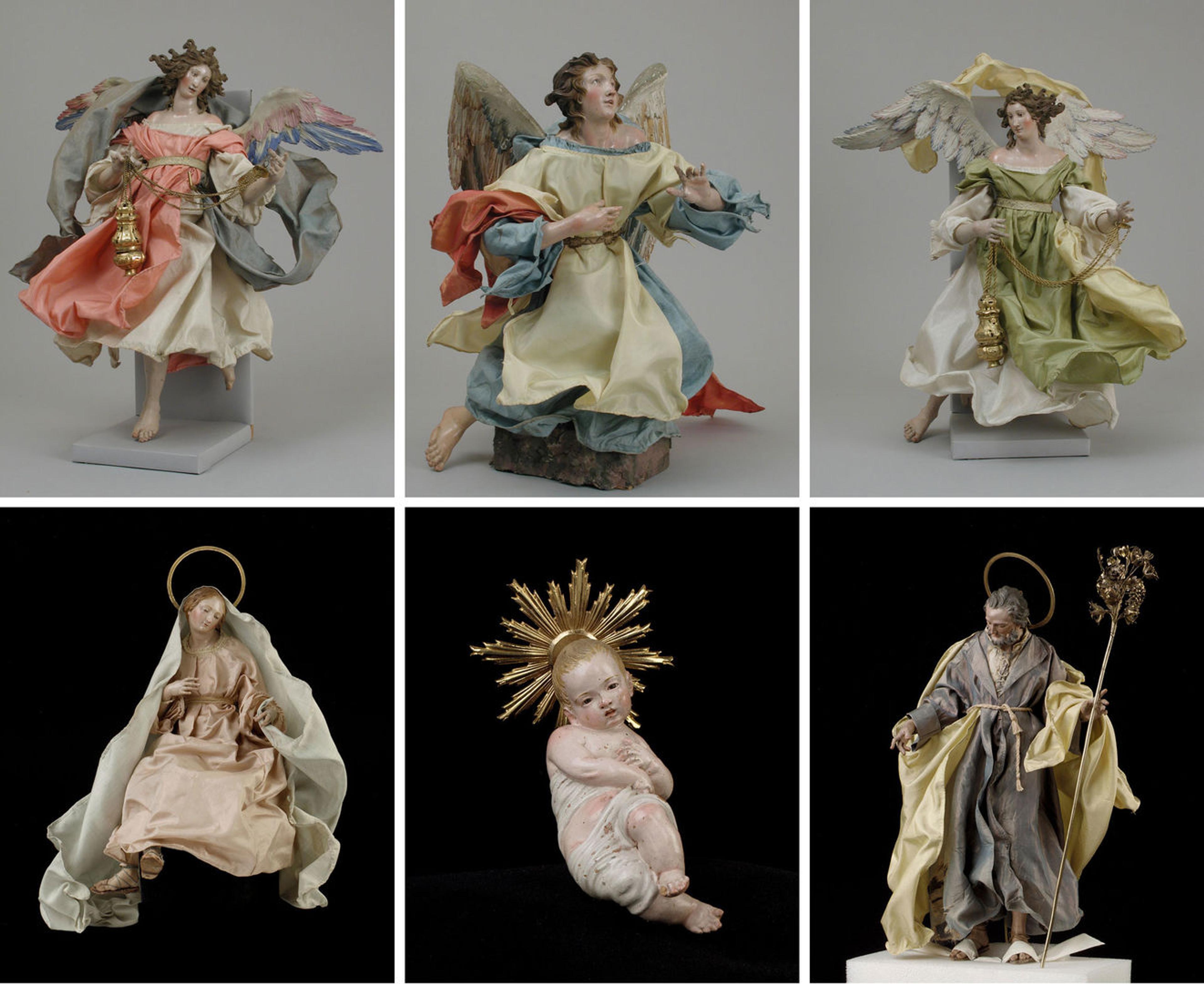Celebrating the Holidays at The Met: Five Things to Know

The Christmas tree and Neapolitan Baroque crèche at The Met as installed in gallery 305
New York City has many famous Christmas trees: Rockefeller Center, the New York Stock Exchange, and Bryant Park, to name a few. But one of the most beloved trees is certainly the great evergreen that stands in the Medieval Sculpture Hall at The Met, decorated with exquisite eighteenth-century angels and Nativity figures that welcome viewers from all over the world. This year's tree, on view through January 6, carries on that tradition.
Before you visit, here are five things to know about the annual presentation and the other festive installations on view this season.
The Christmas tree tradition began in 1957.
Loretta Hines Howard, a Museum patron, began collecting Nativity figures in 1925. In 1957, she had the brilliant idea of displaying these crèche figures on a Christmas tree at The Met. A few years later, in 1964, Loretta began to give her crèche collection to the Museum. Today, The Met holds more than 250 such objects from her collection.
The Nativity scene has a Neapolitan flavor.

Some of the many crèche figures that adorn the Christmas tree at The Met.
The spruce is twenty feet tall. Twenty cherubs and sixty angels float on its boughs. Clustered around its base—in a scene describing in detail the multicultural society of Naples, Italy—are fanciful homes, a fountain, fifty animals, and more than seventy figures associated with the Nativity. Behind the tree is the Museum's famed choir screen from the Cathedral of Valladolid, and strains of seasonal music waft through the galleries. It's truly a sight to behold.
Each figure has radiant details.

Attributed to Salvatore di Franco (active 18th century). Clockwise from top left: Angel, Angel, Angel, St. Joseph, Infant Jesus, Virgin, second half of 18th century. Italian, Naples. The Metropolitan Museum of Art, New York, Gift of Loretta Hines Howard, 1964
The crèche objects in Howard's collection date from the second half of the eighteenth century and represent many different figures, from angels and shepherds engaged in their daily work, to Saint Joseph and the baby Jesus surrounded by a radiating golden halo. The figures range from twelve to fifteen inches tall, and many are adorned with brilliant accessories such as jewelry and embroideries. Some can even be drawn to the workshops of specific artists, such as Giuseppe Sammartino (1720–1793).
Steps away, there's a magnificent menorah.

Hanukkah lamp, 1866–72. Polish, Lviv (Lvov or Lemberg). Silver: cast, chased and engraved, 33 9/16 x 23 1/8 in. (85.3 x 58.7 cm). On loan from The Moldovan Family Collection
The holiday season is not just about Christmas. Just steps away from the Christmas tree at The Met Fifth Avenue, a silver Hanukkah lamp from nineteenth-century Poland, a loan from the Moldovan Family Collection, is displayed in gallery 556. As Abigail Rapoport, research associate for Judaica, explains: "this particular menorah embodies the crucial concept of hiddur mitzvah, or the beautification of a Jewish ceremony through the use of beautiful objects." Although Hanukkah is over, this stunning menorah will be on view through the end of December.
The Met Cloisters is decked out too.

Three views of holiday decorations at The Met Cloisters
The Met Fifth Avenue isn't the only Museum location that's decked out for the holidays. In the main hall of The Met Cloisters—the branch of the Museum dedicated to the art, architecture, and gardens of medieval Europe—grand displays of fresh ivy and hand-polished lady apples, hazelnuts, rose hips, and pine-cones bring good cheer to one and to all. (Be sure to watch a time-lapse video of the 2014 installation to see how it all comes together.) The annual presentation is also on view through January 6. And while you are there, make sure to see some of the Museum's many depictions of the adoration of the Magi, a quintessential Christmas scene.
See a list of articles published by the editorial team in the Digital Department at The Met.